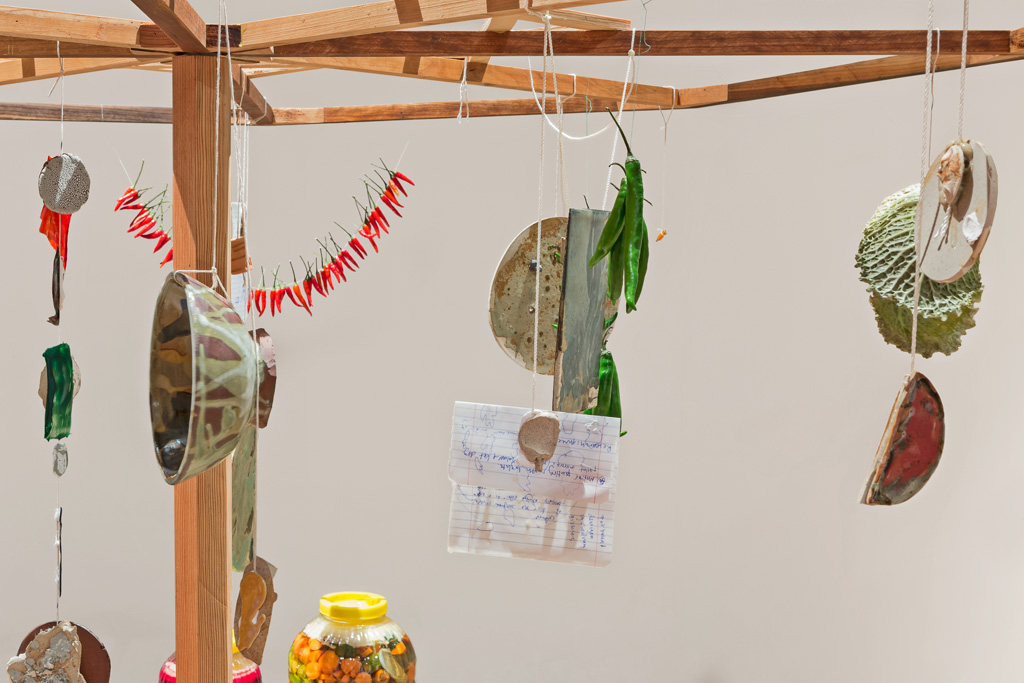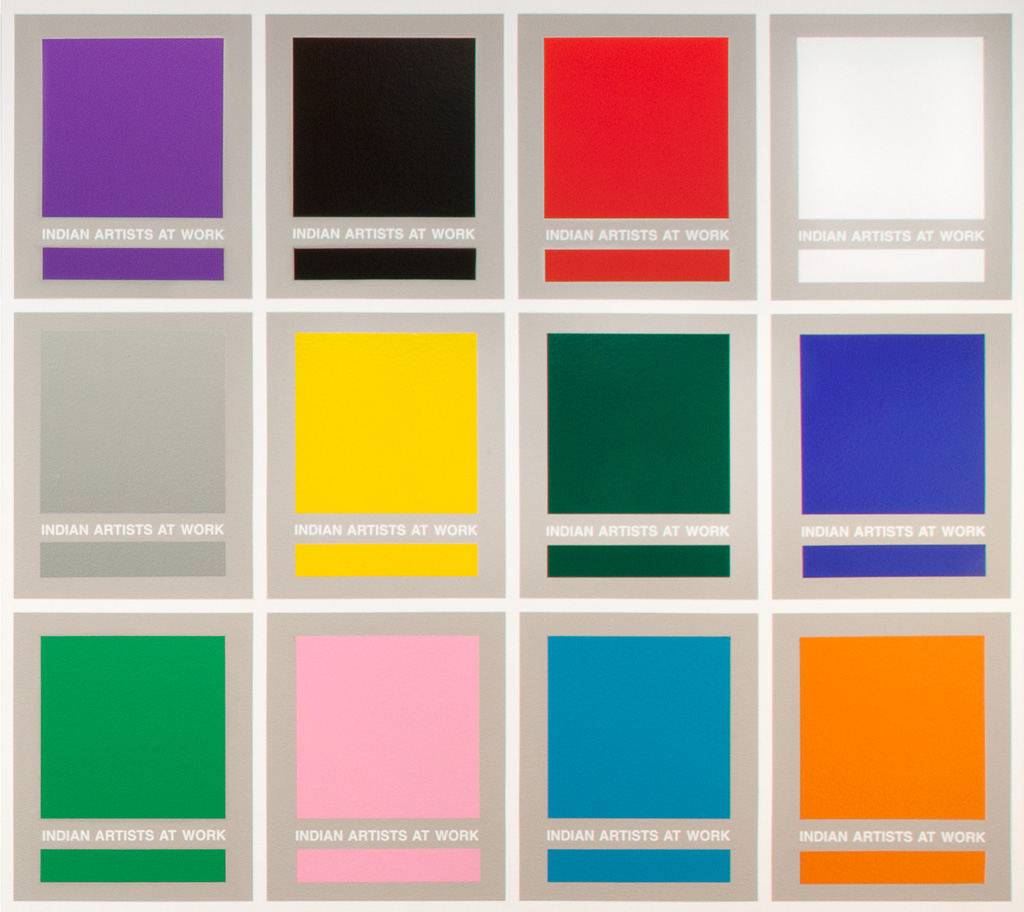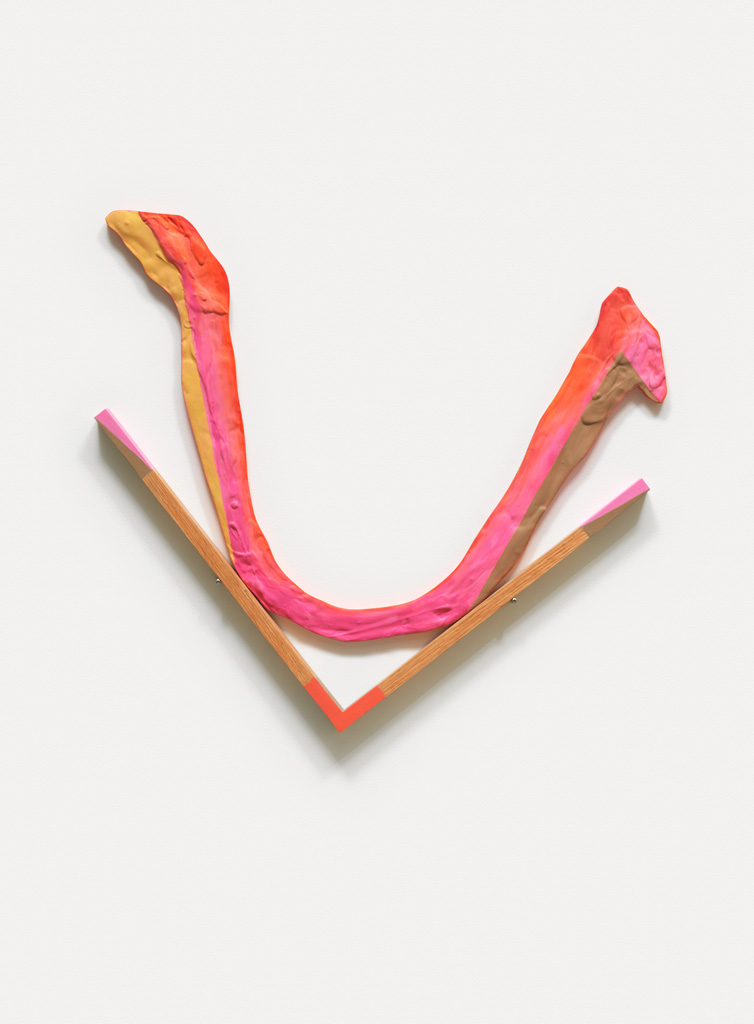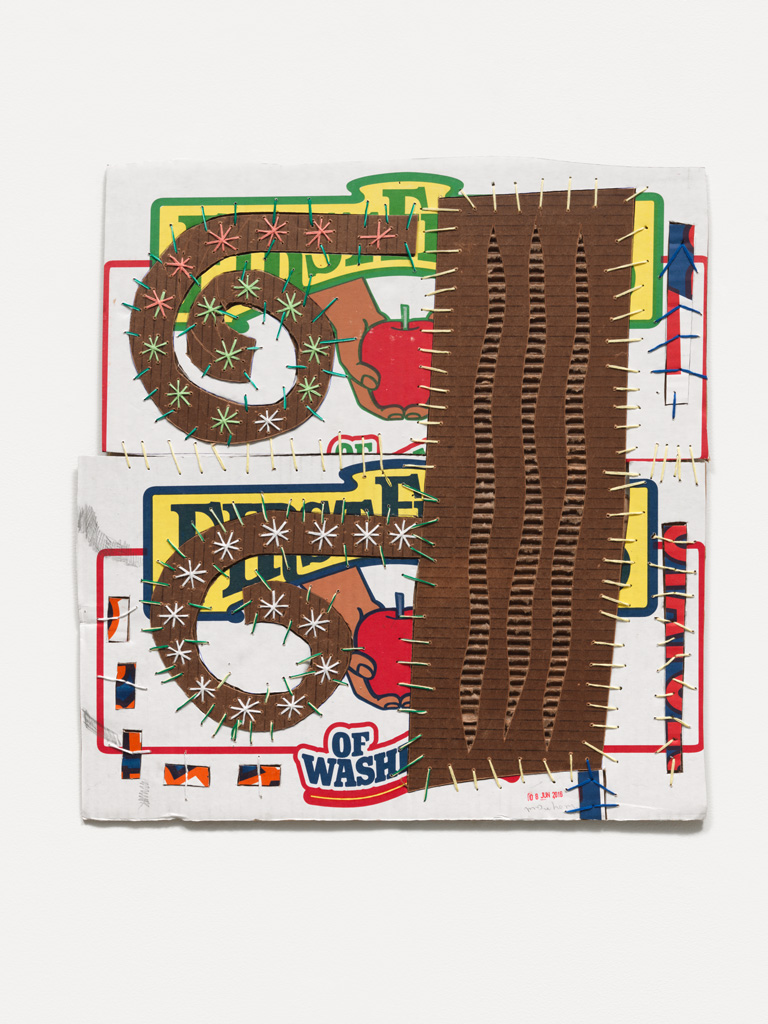
Tamara Henderson. The Scarecrow’s Holiday, 2015. Textile, wood, glass, sand, pigment. Courtesy of the artist and Rodeo, London .
I recently spoke with the curator Jesse McKee who, along with Daina Augaitis, organized Ambivalent Pleasures, the Vancouver Art Gallery survey of local practices, which opened December 3, 2016.
Lee Plested: As part of organizing this survey, how did you unravel the story of artistic production in the city today?
Jesse McKee: Vancouver has been shaped by mega-events—such as the 1986 World Expo and the 2010 Winter Olympics—that changed the city’s landscape and demographics. One dramatic shift has been that property values have increased every year. As a result, artists often have tenuous leases on studios and homes, and some of them spend a fair amount of time outside of the city, on residencies, teaching, studying, and so forth. Some may come to the city for a period of time to be enmeshed in the rich scene, only to leave shortly thereafter because the ends don’t justify the means. As a counterpoint to this precarious existence, material practice is alive and well. The exhibition features a rich array of mediums, including painting, ceramics, textiles, and sculpture. We responded to the city’s robust artistic activity by centering the exhibition on objects, to reinforce that artists need affordable studio space more than ever.
LP: What curatorial methods did you follow, in selecting and presenting these practices?
JM: In formulating the exhibition, we made lists of artists to visit, soliciting the advice of other curators at the Gallery. We visited the studios of about ninety artists from Vancouver, even if they find themselves elsewhere, and of artists who had spent time in the city and made substantial bodies of work here. Additionally, we visited exhibitions in public and private galleries. Instagram played a role in the process, too, as news of our research spread through a relatively tight-knit community. We then spent many hours going through images and research materials, discussing practices and how to frame them. It really was a project of looking, listening, and finding consensus. We then articulated relationships between the works regarding how the exhibition is installed, considering the journey of the viewer.
LP: Surrealism and abstraction are two of the identified themes in the exhibition. What methods of interpretation are you bringing to these works?
JM: We were drawn to Okwui Enwezor’s framing of the 2015 Venice Biennial, where he described the themes as “filters” that can be used to frame perception when needed. This concept is useful in thinking about our exhibition: there are some focused galleries, where you might think you’re in a space dedicated to explorations of abstraction or the surreal, but then you may find that another interpretive lens is useful. For instance, in one of the high-wall galleries, where the works may appear to be surreal and about more liquid identity politics, Krista Belle Stewart has selected a work from the Gallery’s collection, Arizona Heat Wave (1958), by Leon Polk Smith, who was largely regarded as an abstract expressionist. The filter concept offers an exercise in observing in multiple ways at once.

Derya Akay. cyclodrum, potbound & soup from stone, 2015. Ash, acrylic, beeswax, buttermilk, ceramics, clay gathered from turkish beaches (cone 6 orange cone 10 silver), cochineal dye, coffee, copper, cotton, egg yolk, owers, ginger ale, glass, glue, house paint, hydrogen peroxide, indigo dye, kimchi juice, linen, madder root dye, metal, mirror, oil paint, paper, pickling fruits & vegetables, pigment, plaster, plexiglass, sand, sardine oil, sea salt, silk, sodium hydroxide, spit, stones from Chris, Joe & Wesley and Cemrenaz (melted), teavinegar, walnut oil, watercolor, wood. Courtesy of the artist. Photo: Toni Hafkenscheid. Courtesy of Gardiner Museum.
LP: History always has its place in the present, and artists are often drawn to pulling apart linear narratives. Will you be making similar directives? Will this be tangible in the texts for the show?
JM: The catalogue is a good place to understand these pushes and pulls and placing things within a timeline. I interviewed the science-fiction writer William Gibson, who has lived here since the 1970s. We spoke about his understanding of atemporality, the slowing down of historical layering and flattening the divisions of time, in our perception. In his writing, he does this by making something that seems futuristic today seem more like a relic. He also makes us realize that our perception of the past is rarely what people of the past perceived of that time. So, in framing perception in more open and layered ways, we can dispel the exhibition’s purpose as being a definitive cross section of the city at this point in time, and instead it can be more about looking at artists and their works at various stages in their processes of making and becoming. For example, Raymond Boisjoly points to this situation in his work, Author’s Preface (2015), making us realize that knowledge is rarely a fixed thing; it’s alive and it will evolve through the years as its own form of life, as will the perception of it.

Krista Belle Stewart. Indian Artists at Work, 2016. Acrylic paint and vinyl. Courtesy of the Artist.
LP: Ecological thinking is increasingly resonant to many cultural workers. Do you see this exhibition as having an impact outside of the gallery?
JM: I think one of the ecological concepts of the exhibition is revealed in your question. There is rarely an outside and inside; the gallery is a part of the world, not a space outside of it. Thinking of outside and inside is like saying that nature is over there, that nature is not in the city or within ourselves. But you can never look at it from a distinct perspective because you are it. In the past year I’ve been reading Timothy Morton’s work in philosophy—Hyperobjects: Philosophy and Ecology at the End of the World (2013), and Dark Ecology: For a Future of Coexistence (2016)—and he has me rethinking perception, humans, and nonhumans and the crux of the problems we’re in. He is a literary scholar as much as a philosopher, and he frames the problem by considering the film Blade Runner. Harrison Ford’s character throughout the film is hunting androids, while he is an android, and this brutal realization causes a crisis in the character. Morton relates this to Romantic irony, in which the narrator of the story realizes he’s a character in the story.
We need both the Naomi Klein approach, to focusing activism toward anti-extraction policies at large, and the Lucy Lippard approach, to viewing and affecting land through new forms of cultural practices. But this is an exhibition inside of an art gallery. And doing the typical eco-movement thing, of showing the bad behaviors that humans are involved in, doesn’t seem to be productive either. What Morton offers is a long view, framing Romanticism as a movement that never really ended because we are still burning coal. This is a way to return to that crisis of realization, of shock and awe at the situation, as a way to process it ourselves and feel the deep realization that we are the problem. If this exhibition can make people feel more connected to nonhuman entities, I’d be ecstatic. It’s not a solution; it’s not action toward a fix because things are never that simple. What this exhibition offers is a process of understanding materials, the way they can operate and misbehave to our surprise, and the pleasures they can bring outside of their tooled usefulness.
Ambivalent Pleasures is on view at the Vancouver Art Gallery from December 3, 2016 to April 17, 2017.





